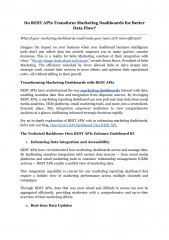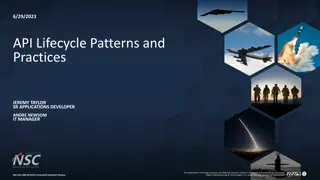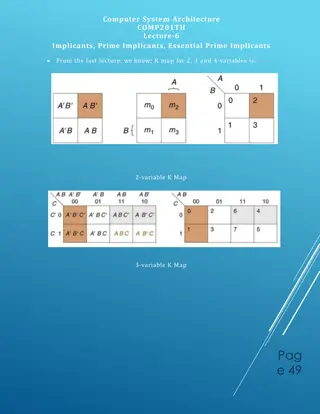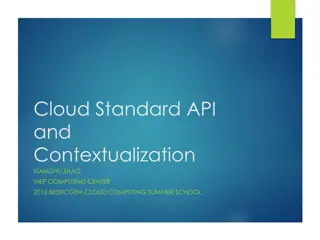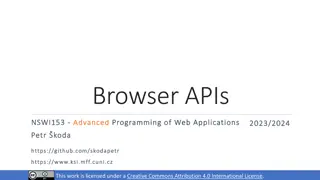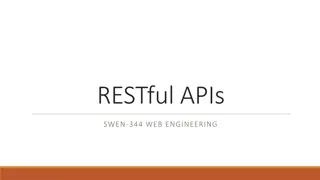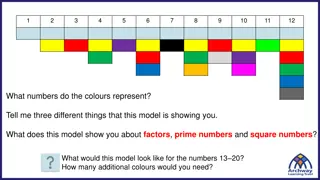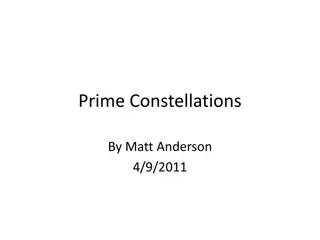SDWIS Prime REST APIs
This event took place in Salt Lake City, Utah on July 11, 2018, hosted by the U.S. Environmental Protection Agency. It focused on discussing data management for the SDWIS Prime system and exploring opportunities for collaboration and progress in water information technology. Participants included professionals in the field of water data management, users of the system, and representatives from various organizations.
Download Presentation

Please find below an Image/Link to download the presentation.
The content on the website is provided AS IS for your information and personal use only. It may not be sold, licensed, or shared on other websites without obtaining consent from the author.If you encounter any issues during the download, it is possible that the publisher has removed the file from their server.
You are allowed to download the files provided on this website for personal or commercial use, subject to the condition that they are used lawfully. All files are the property of their respective owners.
The content on the website is provided AS IS for your information and personal use only. It may not be sold, licensed, or shared on other websites without obtaining consent from the author.
E N D
Presentation Transcript
SDWIS Prime REST APIs Elinor Keith ASDWA Data Management Users Conference Salt Lake City, Utah July 11, 2018 U.S. Environmental Protection Agency
REST APIs APIs Websites (such as the SDWIS Prime User Interface, or UI) are how computers communicate to humans over the internet, and Application Programming Interfaces (APIs) are how computers communicate to other computers APIs allow 2 things to be exposed and used safely over the internet: Data Functionality U.S. Environmental Protection Agency
Example: Possible Violations API Sometimes users want to view violations one- by-one, and sometimes (especially for monitoring violations with a lot of analytes) they want them to be grouped together first REST APIs can call each other so that they are flexible enough to provide both State Application API: Group violations together (functionality) API: View individual violations (data) U.S. Environmental Protection Agency
REST APIs APIs For SDWIS Prime, the focus of the APIs will be on data access Users will be able to view, create, replace, update, or delete their data using the REST APIs just as they can through the UI, according to their permissions States or third parties will be able to develop their own interfacing applications (things like sanitary survey apps) and potentially share them with other states U.S. Environmental Protection Agency
REST API Definitions DELETE: delete data GET: view data OPTIONS: find the allowed actions POST: update or create data PUT: create data REST: REpresentational Stateless Transfer URI: Uniform Resource Identifier, the web address of the API (aka Endpoint) U.S. Environmental Protection Agency
REST APIs RESTful characteristics: Client-server: the REST client and server are independent, and only connected over the internet (separation of concerns) Stateless: no client context is kept on the server (although the client can create or update SDWIS Prime data) Cacheable: clients or intermediaries can cache the responses Layered system U.S. Environmental Protection Agency
Long-term sustainability As long as three things are maintained: API inputs API outputs The API URI/Endpoint both the client (a state application) and the server (EPA s SDWIS Prime APIs) can be upgraded independently of each other U.S. Environmental Protection Agency
API vision Build out REST APIs so that the Prime UI can be released as open source and be fully functional Allows states to take the base UI, modify it to suit their needs, and deploy it in their environment Once completed, this ensures that it is possible to create new applications to view, create, or modify any of the data the user can within the UI The APIs will have all the federal data validations built in, and optionally additional state validations U.S. Environmental Protection Agency
Initial REST API and Application In April, EPA began its first APIs with a microbial sample upload API This involved getting a basic authentication set up and some initial data validation Andrew Yuen and Michelle Ibarra of EPA s Office of Environmental Information built a webpage to upload a total coliform negative sample to demonstrate the API U.S. Environmental Protection Agency
Whats to come EPA will work with the IAWG to test the microbial samples API (and the additional APIs which were necessary to support it) Through the fall, EPA will lay the groundwork necessary for the APIs, such as full authorization control After the January release, EPA will ramp up on building additional APIs, beginning with samples U.S. Environmental Protection Agency
Contact Elinor Keith Office of Water, Project Management Office Keith.Elinor@epa.gov (202) 564-7784 U.S. Environmental Protection Agency
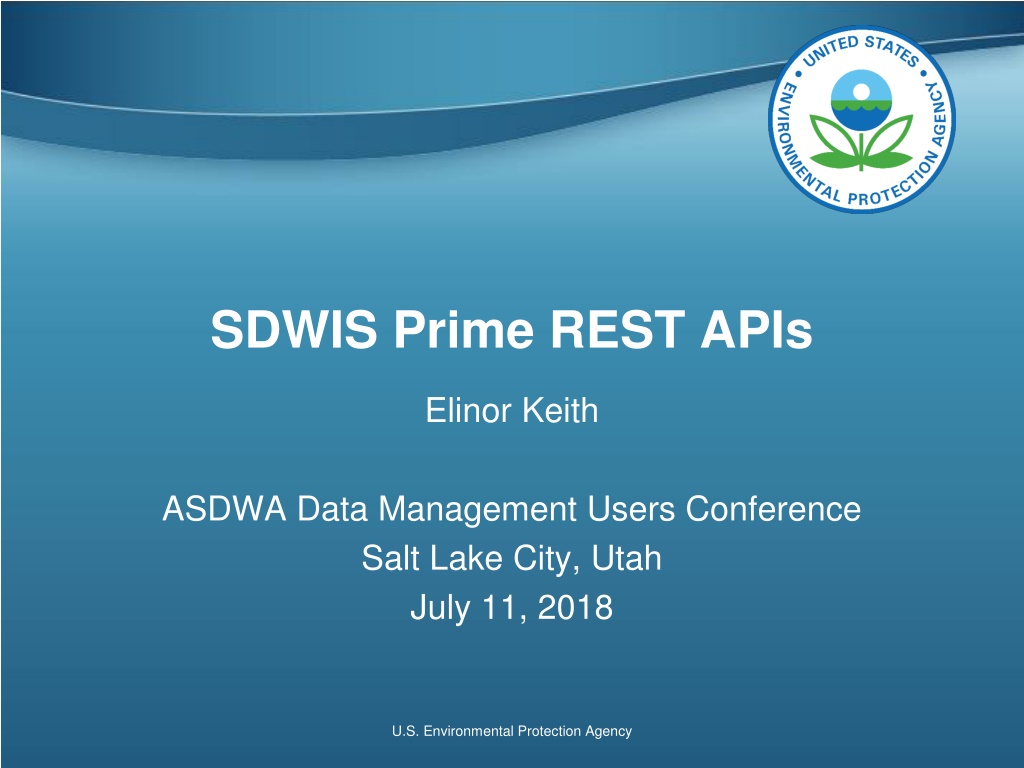
 undefined
undefined





